SPRING BLOOMING PLANTS AND THE ARRANGEMENTS THAT LOVE THEM
During Historic Garden Week, gardeners from around the Commonwealth of Virginia cut foliage and flowers from the plants they grow in their gardens to use in arrangements that adorn the houses on the tour. The arrangements not only showcase the talents of many floral artists, they also showcase some of the stellar plants that grow in Virginia. Consider planting a few in your garden.
Here’s just a small sampling of the arrangements created by James River Garden Club members this April, and some of the plants that star in those arrangements:
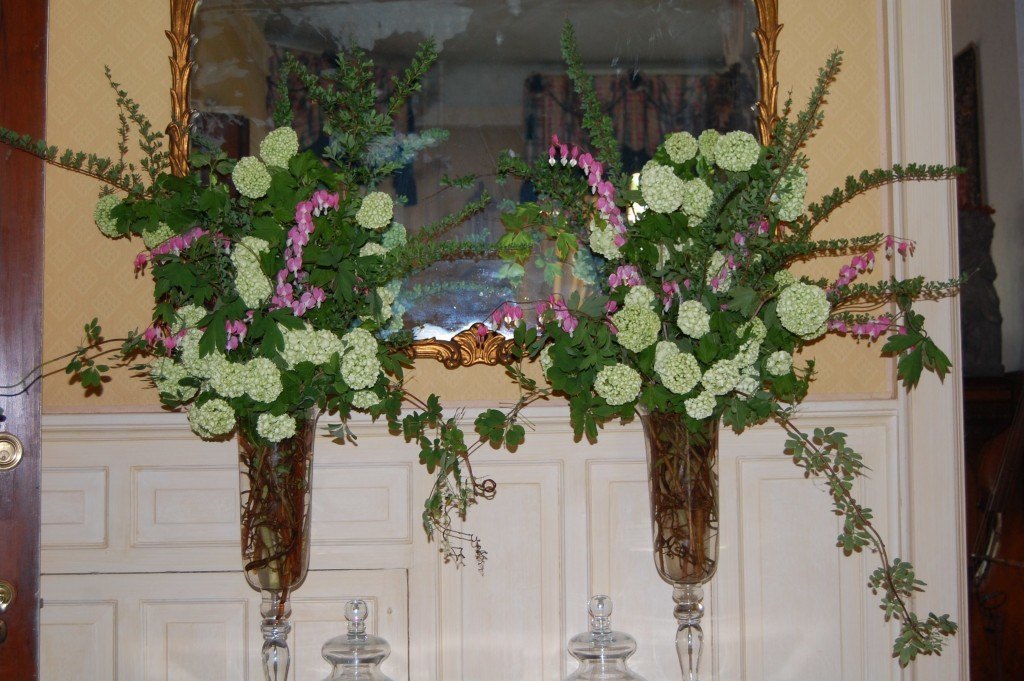
In the double arrangement above, pink Bleeding Heart (Dicentra spectabilis), Guelder Rose — also called Snowball Viburnum — (Viburnum opulus ‘Roseum’), Spirea still in bud, and Akebia vine (Akebia quinata) stand tall.
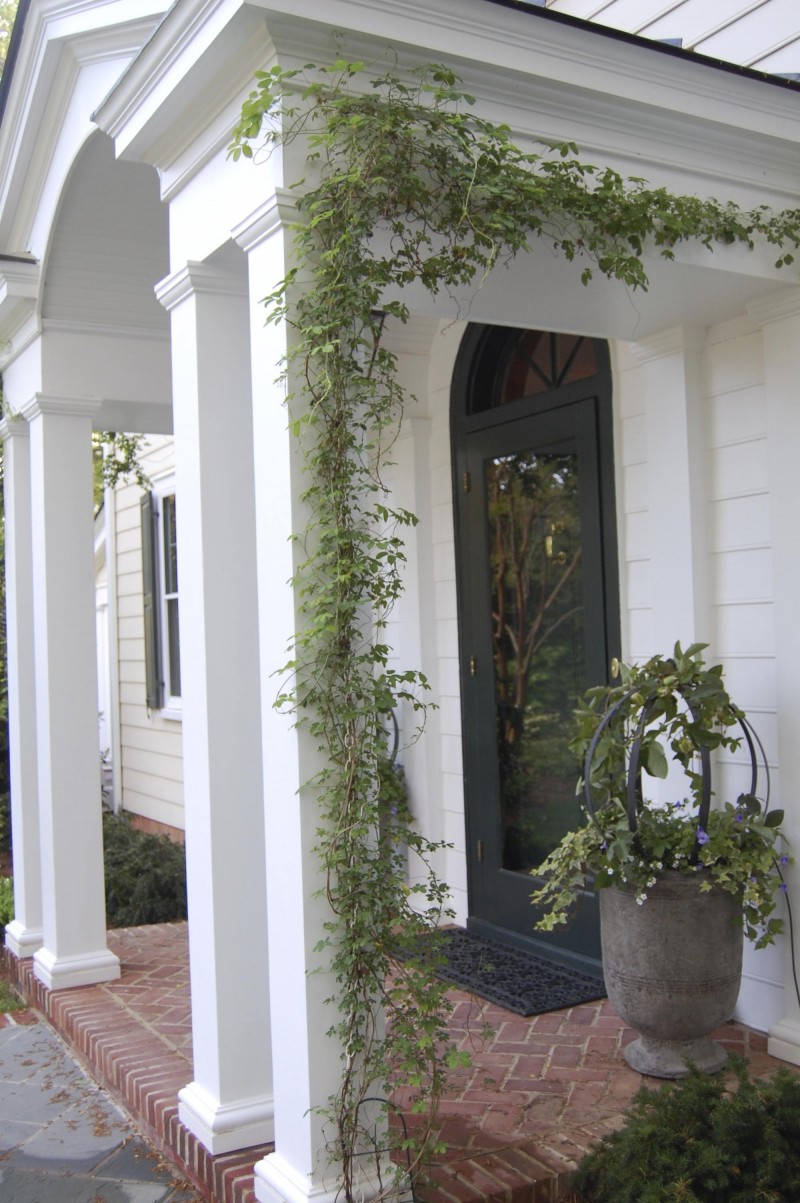
Akebia vine (Akebia quinata)
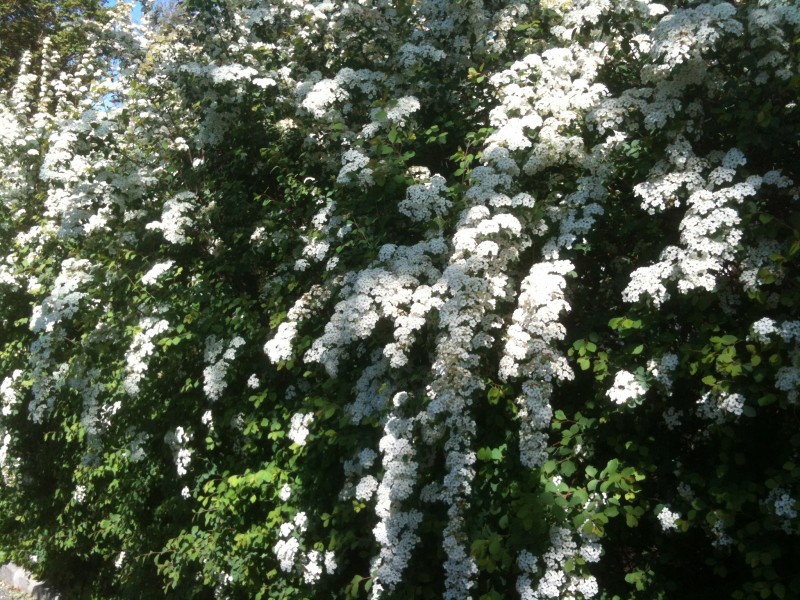
Van Houtte Spirea (Spiraea x van houtteii)
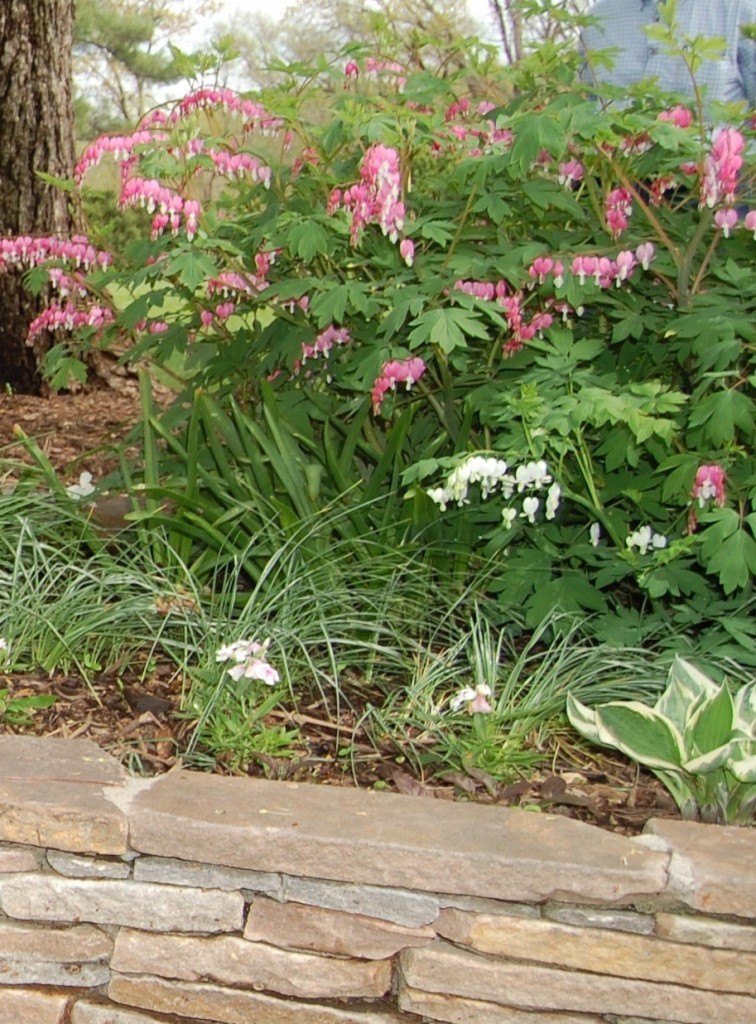
Pink and White Bleeding Heart (Dicentra spectabilis)
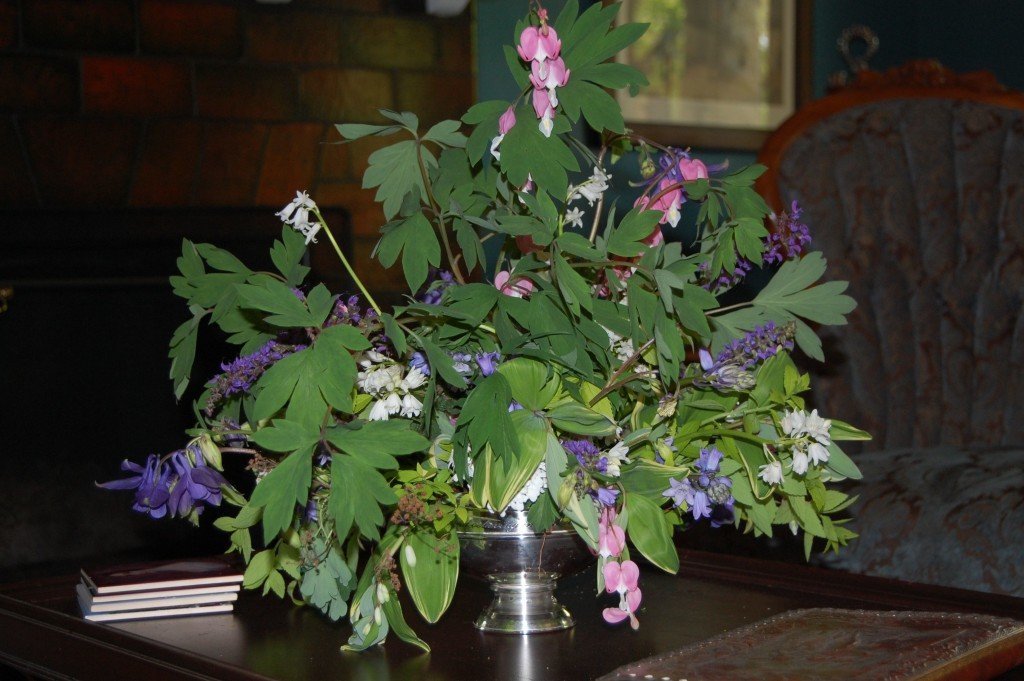
Bleeding Heart is also used in the arrangement above. Columbine (the native Aquilegia canadensis), Spanish Bluebell and its white cousin (Scilla Hyacinthoides), and Variegated Solomon’s Seal (Polygonatum odoratum ‘Variegatum’) casually spill out of a silver bowl.
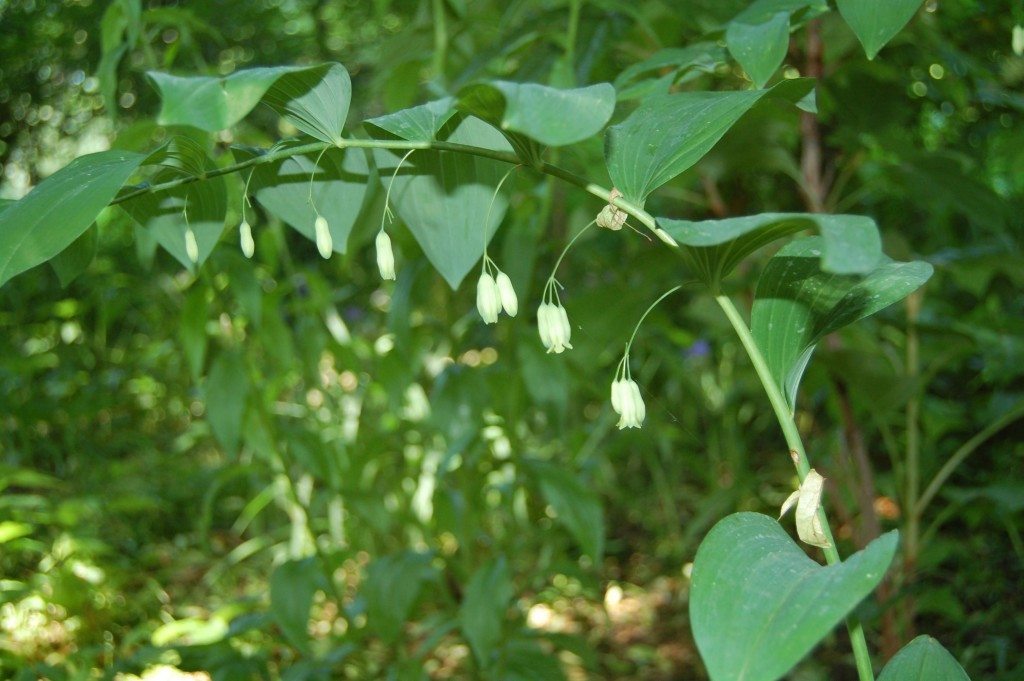
This is the native Solomon’s Seal (Polygonatum biflorum).
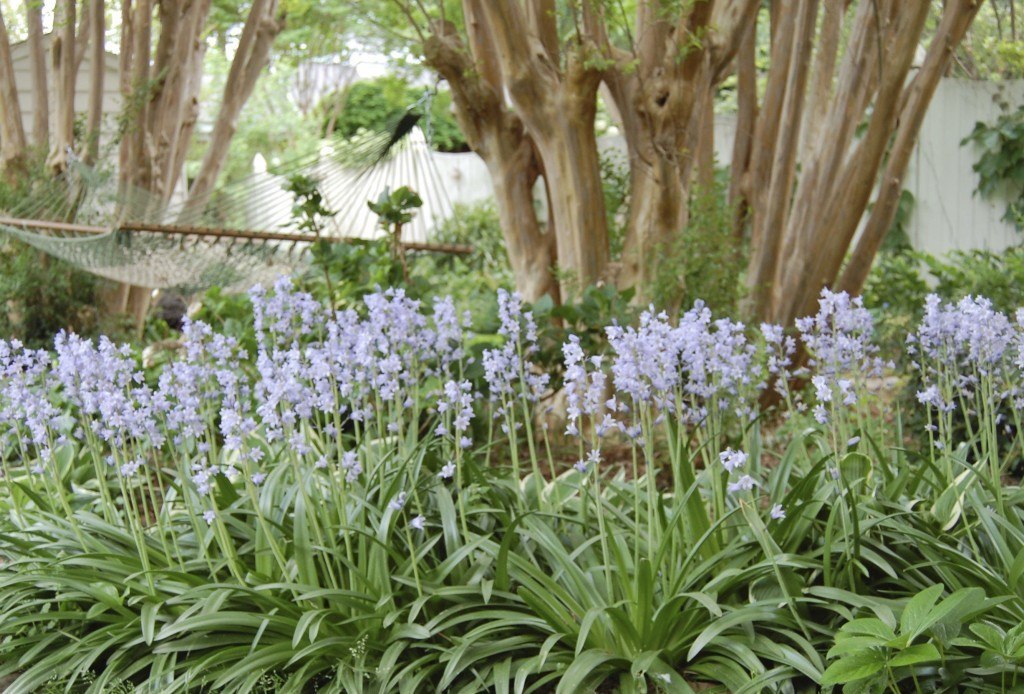
Spanish Bluebells (Hyacinthoides hispanica) are bulbs planted in fall. They bloom in April and May, then go dormant a month later. They spread freely. Photograph by Helen Horsley.
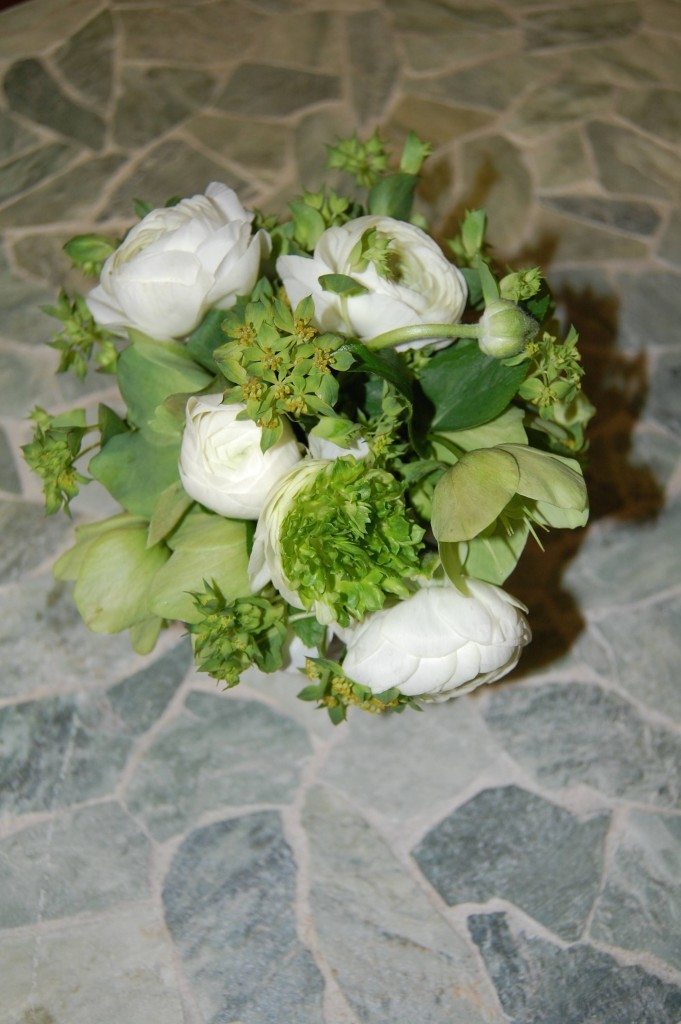
This simple and elegant arrangement contains Ranunculus, Euphorbia and Lenten Rose.
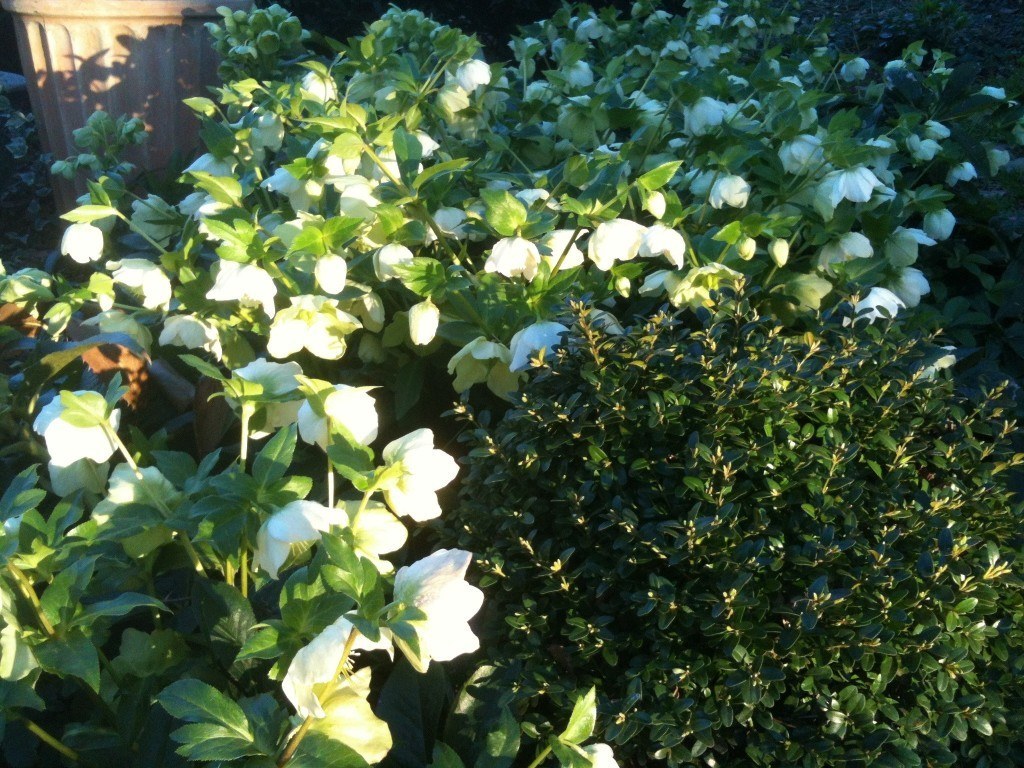
Lenten Rose (Helleborus orientalis)
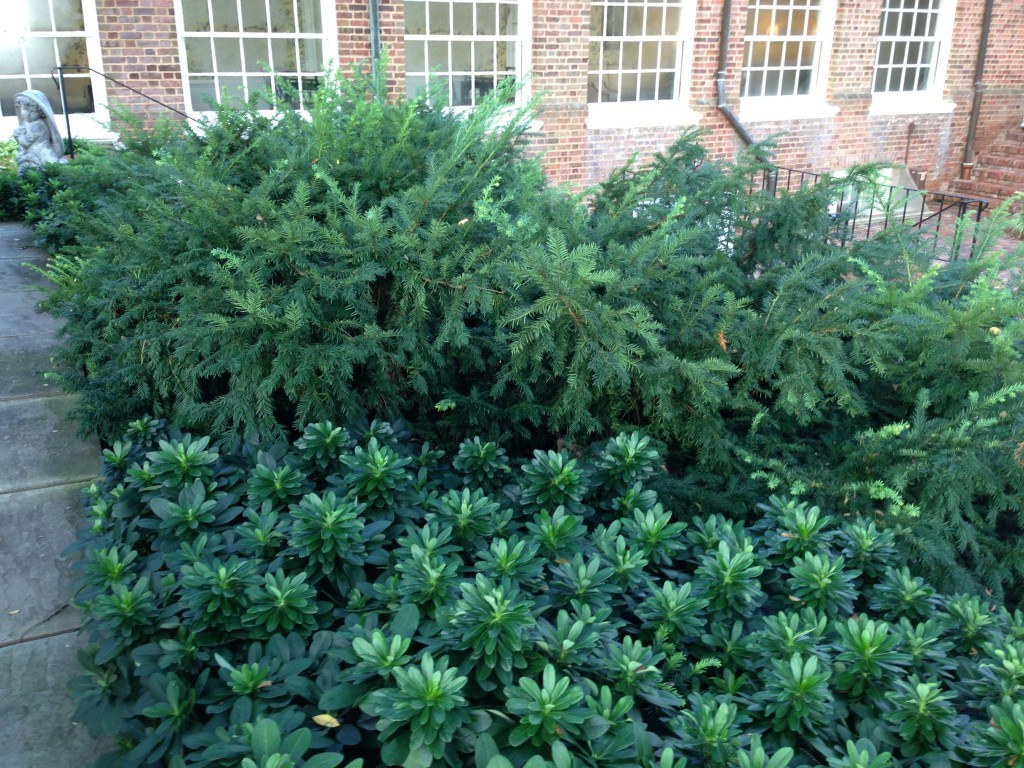
Euphorbia amygdaloides var. robbiae after bloom. It looks a lot like Pachysandra. It is evergreen, thrives in shade, and spreads freely when it’s happy.
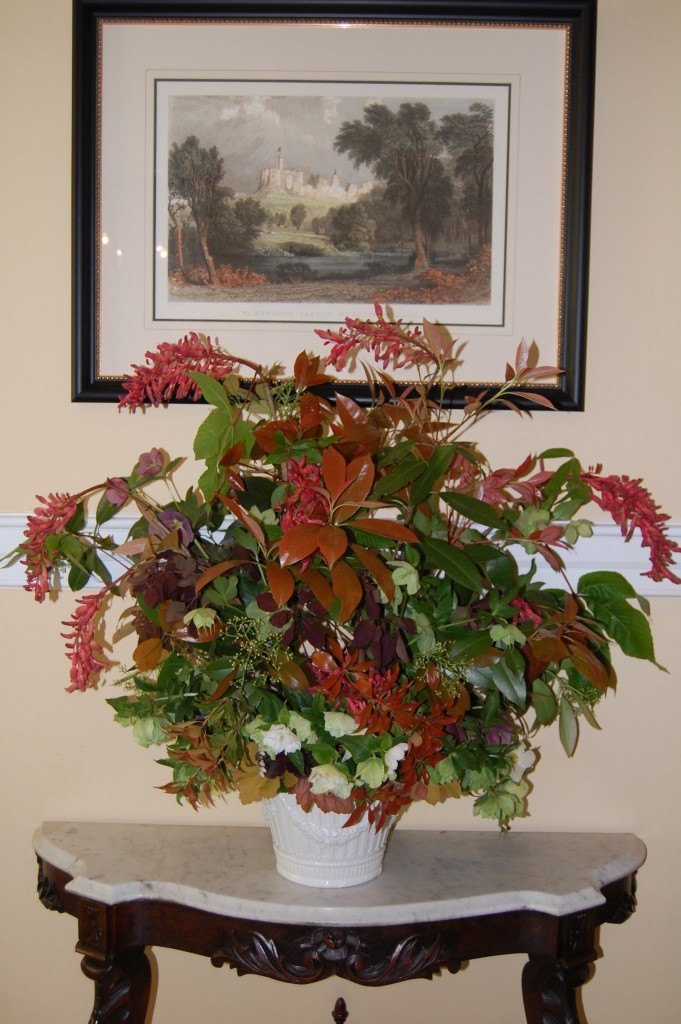
This striking arrangement is all about the foliage. The red-hued foliage of many shrubs, including Red Tips (Photinia x fraseri) and Andromeda (Pieris japonica) highlight the blooms of the Buckeye (Aesculus glabra). The white and pale green blooms of the Lenten Rose complement the reds.
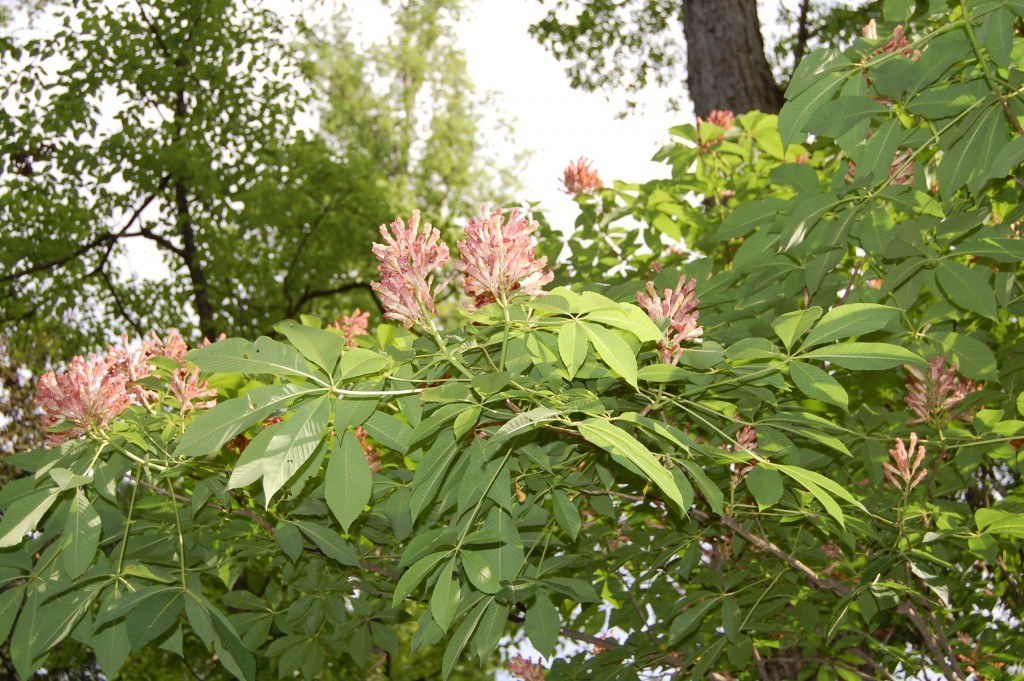
Buckeye (Aesculus glabra)
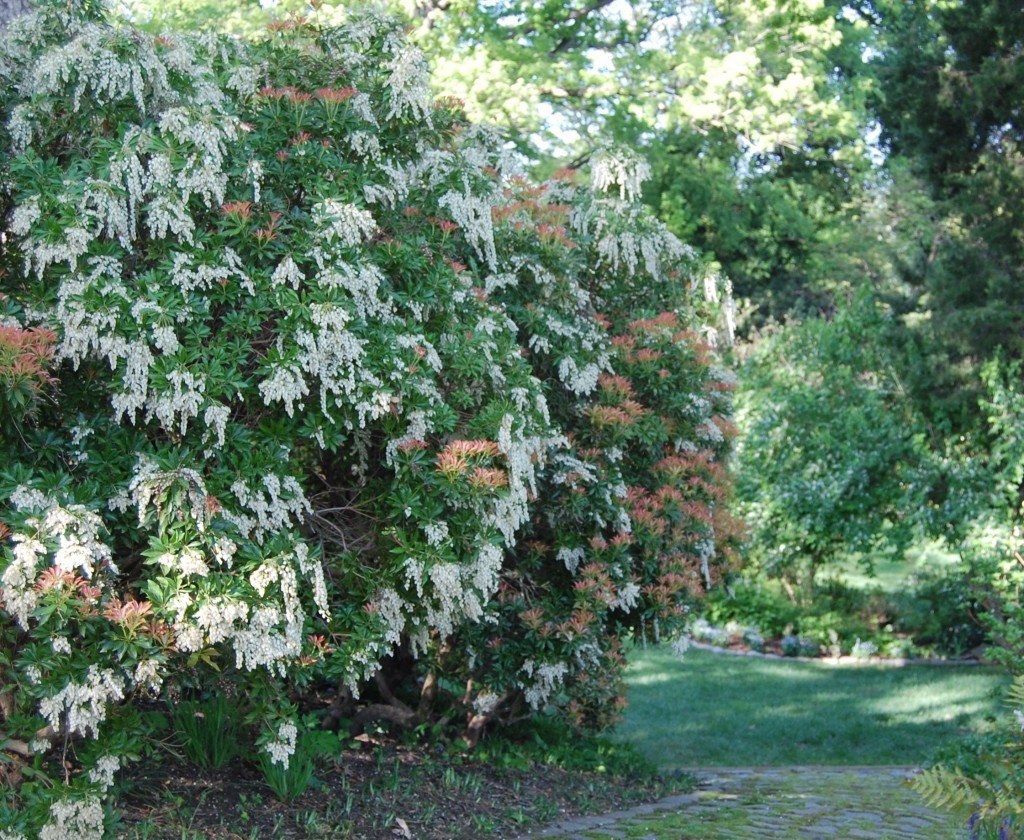
A grove of Andromeda (Pieris japonica) in bloom. The new foliage emerges red, then settles into a nice green.
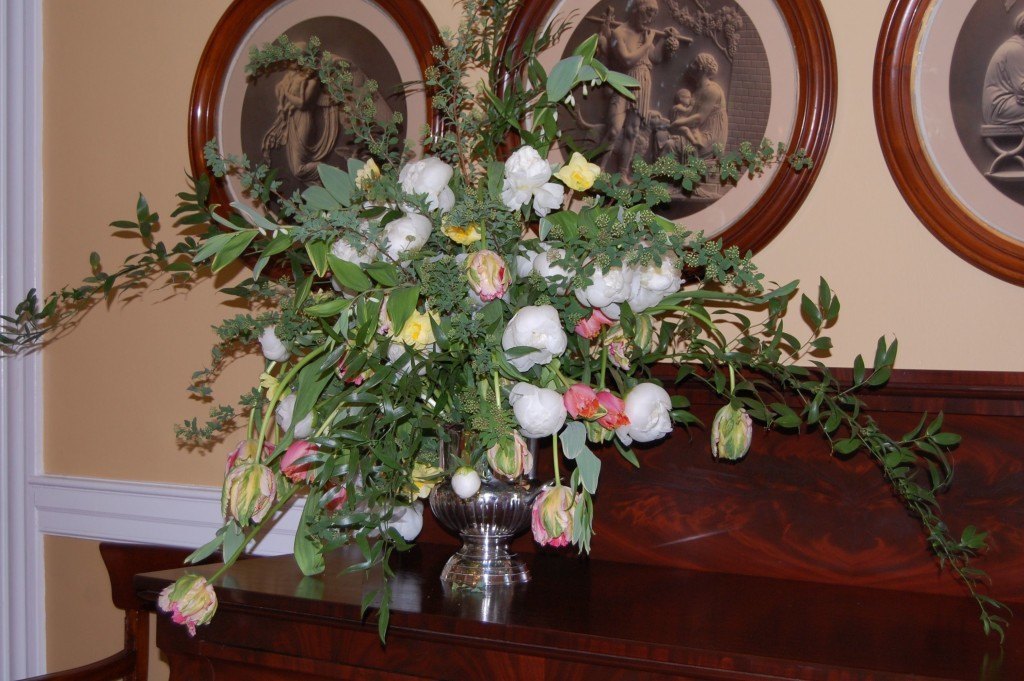 The dramatic arrangement above includes the Spirea and Solomon’s Seal pictured earlier, but the leading ladies here are the Parrot Tulips taking a bow. Poet’s Laurel (Danae racemosa) and Ranunculus anchor the arrangement.
The dramatic arrangement above includes the Spirea and Solomon’s Seal pictured earlier, but the leading ladies here are the Parrot Tulips taking a bow. Poet’s Laurel (Danae racemosa) and Ranunculus anchor the arrangement.
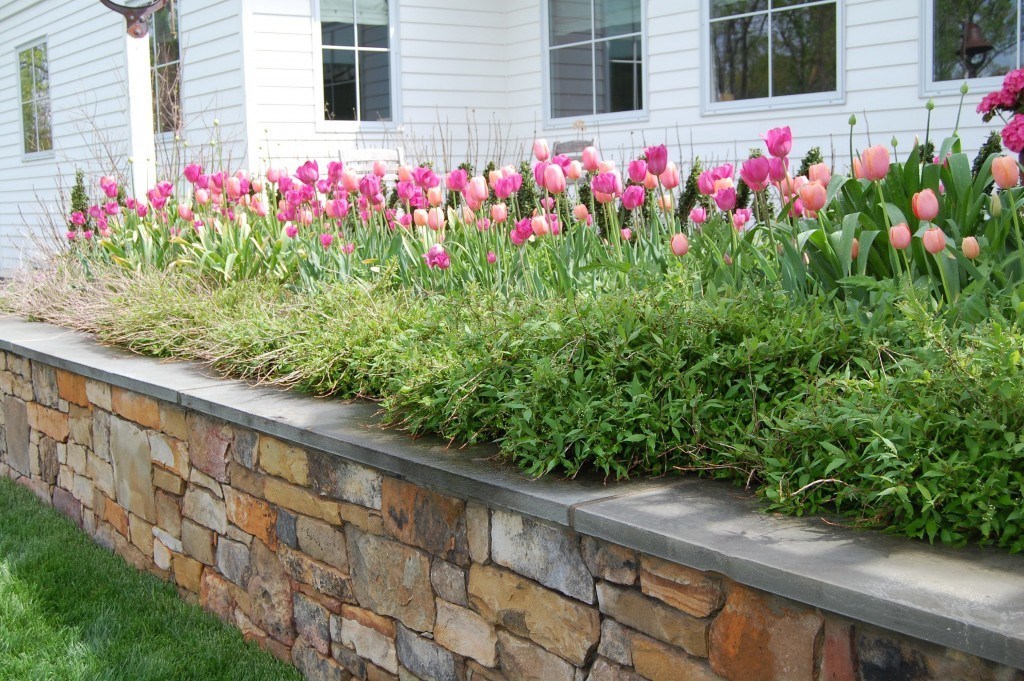
Tulips in varying shades of pink adorn a stone wall in Albemarle County. Deutzia gracilis, in the foreground, is about to pop.
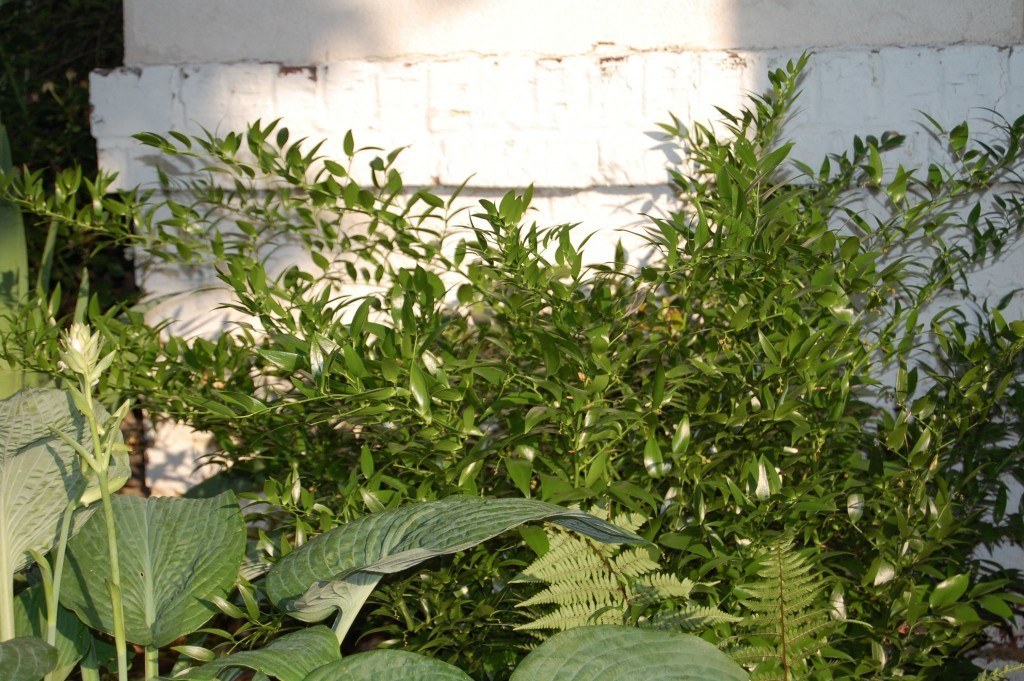
Poet’s Laurel (Danae racemosa) is evergreen, and lasts in a vase of water for a month.
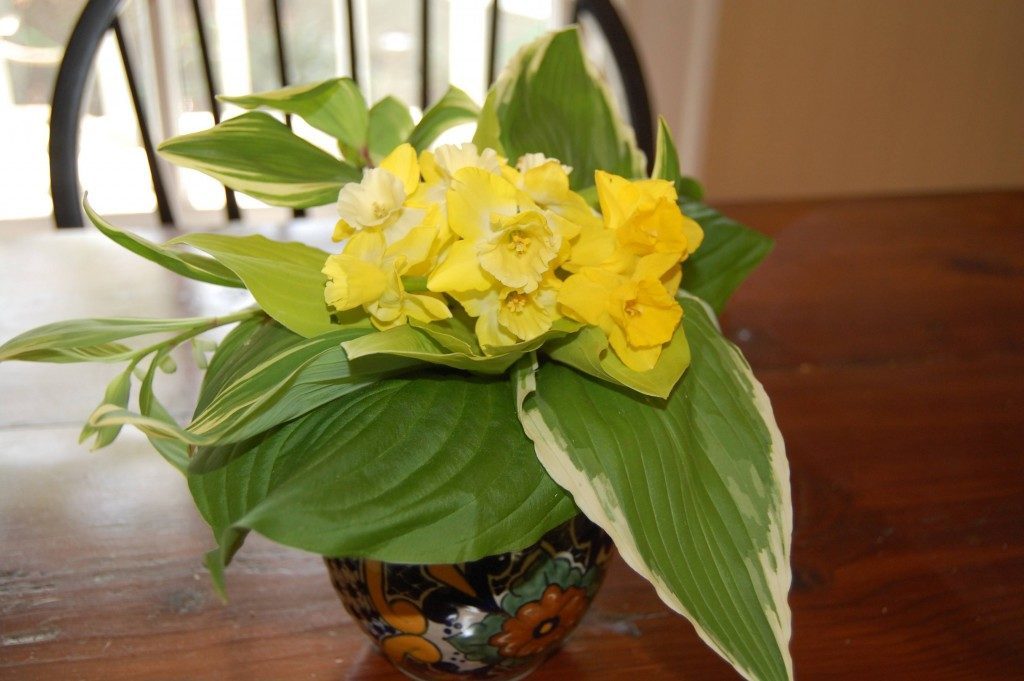
So simple, yet so beautiful. Hosta and Variegated Solomon’s Seal encircle Daffodils.
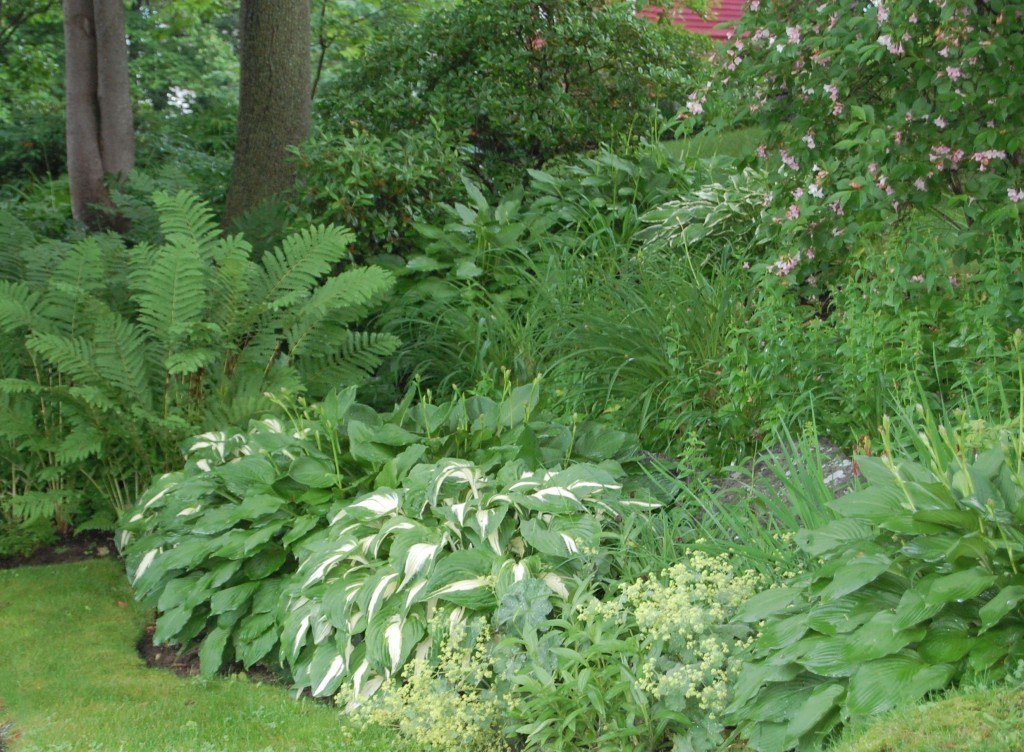
Several varieties of Hosta join ferns and Lady’s Mantle (Alchemilla mollis) in this Maine garden.
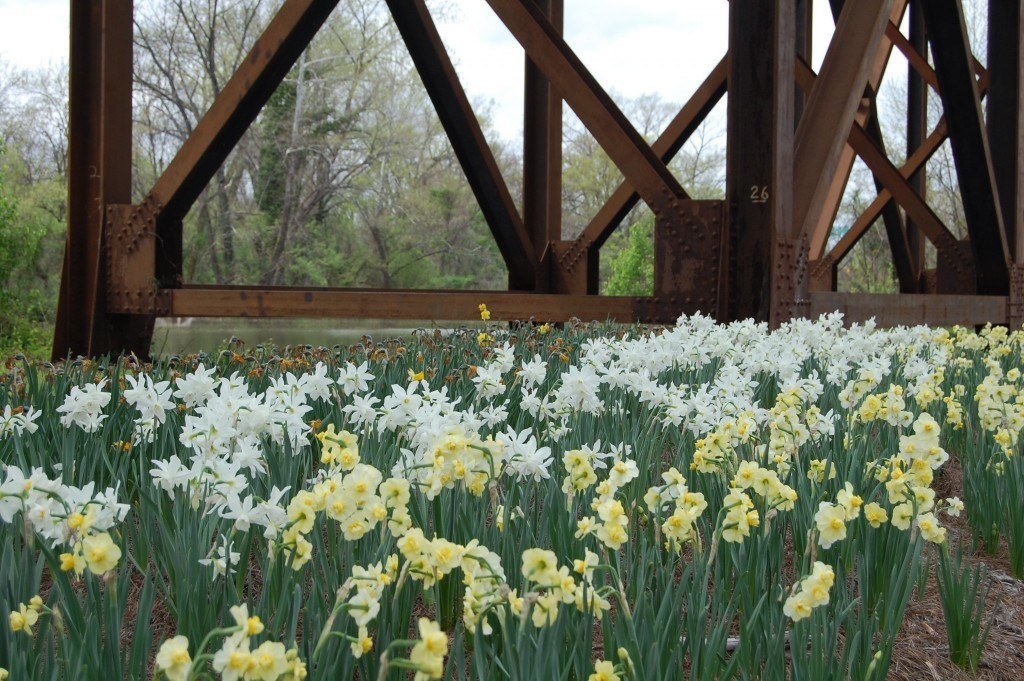
‘Cheerfulness’ and ‘Sir Winston Churchill’ Narcissus bloom along the Capital Trees Low Line in Shockoe Bottom.
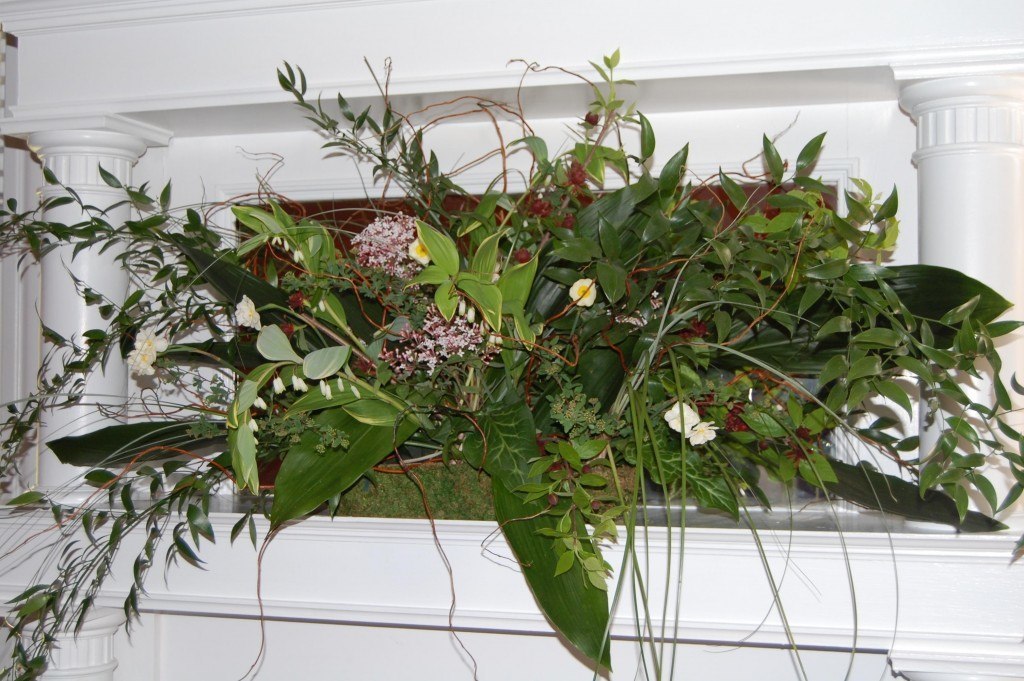 This modern arrangement has an abundance of greenery, including grasses, Poet’s Laurel, Variegated Solomon’s Seal and Arum (Arum italica). Flowers are used sparingly, but to great effect. They include dimuntive daffodil blooms, Lilac (Syringa, genus, I think it is ‘Miss Kim’), and Carolina Allspice (Calycanthus floridus).
This modern arrangement has an abundance of greenery, including grasses, Poet’s Laurel, Variegated Solomon’s Seal and Arum (Arum italica). Flowers are used sparingly, but to great effect. They include dimuntive daffodil blooms, Lilac (Syringa, genus, I think it is ‘Miss Kim’), and Carolina Allspice (Calycanthus floridus).
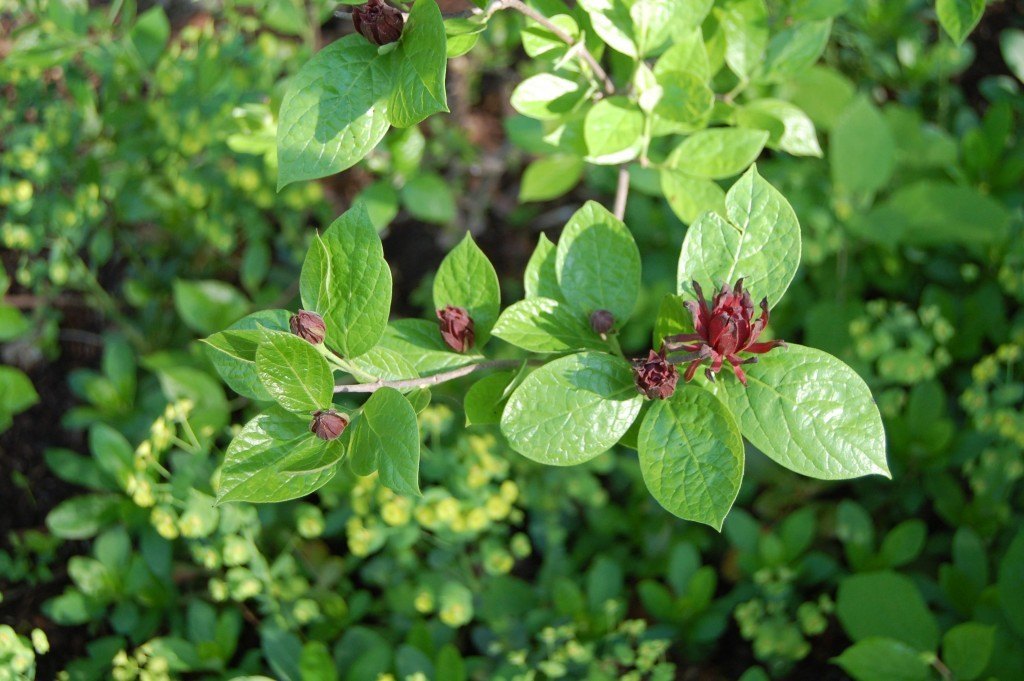
The native Carolina Allspice (Calycanthus floridus)
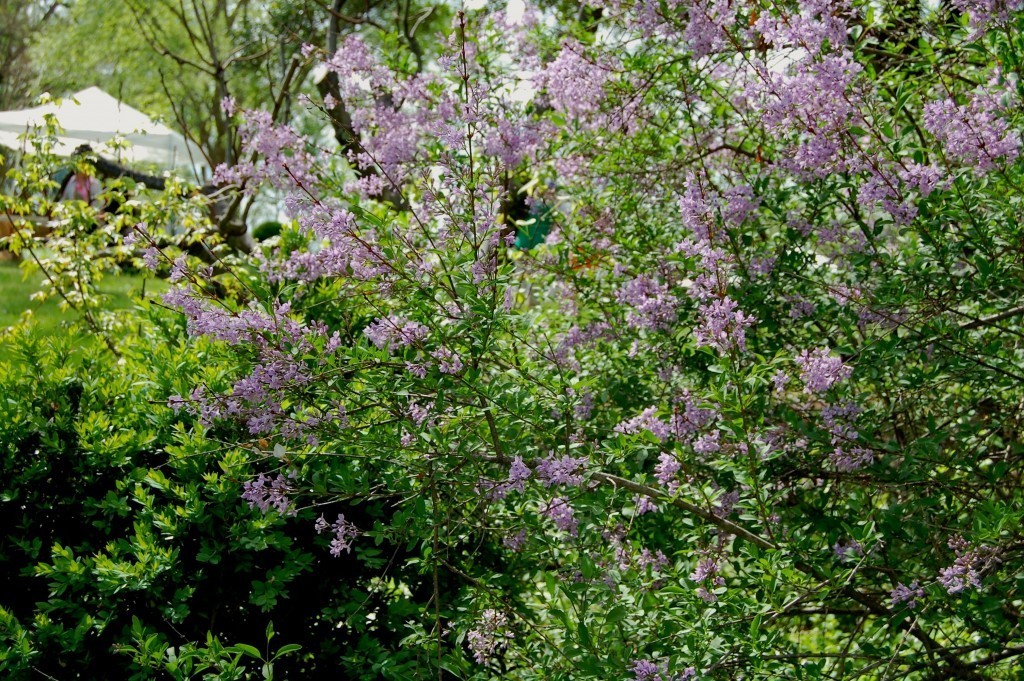
Lilac (Syringa vulgaris)
 The mantle arrangement above is a feast of textures and contrasting hues, with Photinia, Boxwood, Variegated Euonymus, Spanish Bluebells, Lenten Rose, Pachysandra and Native Azalea. Photo by Betsy Trow.
The mantle arrangement above is a feast of textures and contrasting hues, with Photinia, Boxwood, Variegated Euonymus, Spanish Bluebells, Lenten Rose, Pachysandra and Native Azalea. Photo by Betsy Trow.
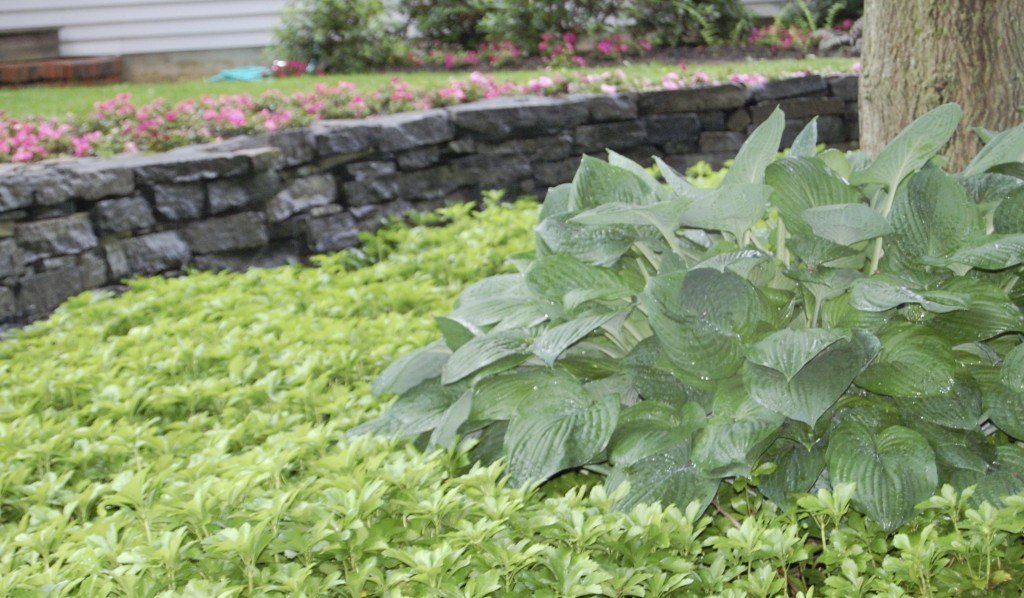
Pachysandra (Pachysandra terminalis) is a great evergreen ground cover that tolerates tree roots.
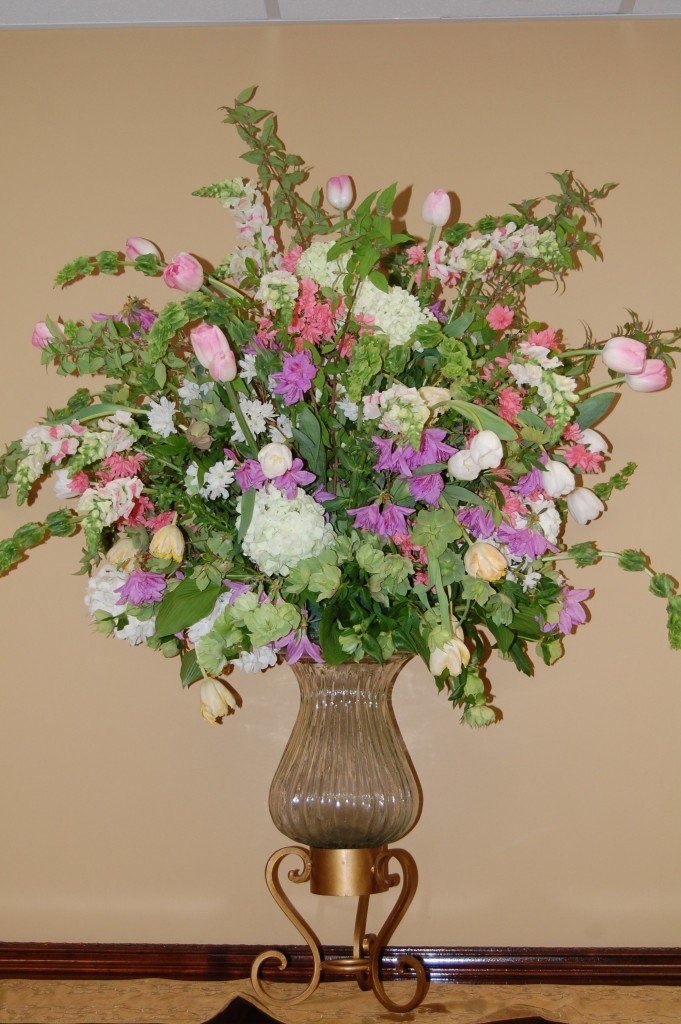 This arrangement welcomes spring in all its glory. Pink and peach Tulips, pink and lavender Azaleas, and pink Snapdragons blend beautifully with Snowball Viburnum (the OTHER Snowball Viburnum, Viburnum macrocephalum), Lenten Rose, Deutzia gracilis and greens.
This arrangement welcomes spring in all its glory. Pink and peach Tulips, pink and lavender Azaleas, and pink Snapdragons blend beautifully with Snowball Viburnum (the OTHER Snowball Viburnum, Viburnum macrocephalum), Lenten Rose, Deutzia gracilis and greens.
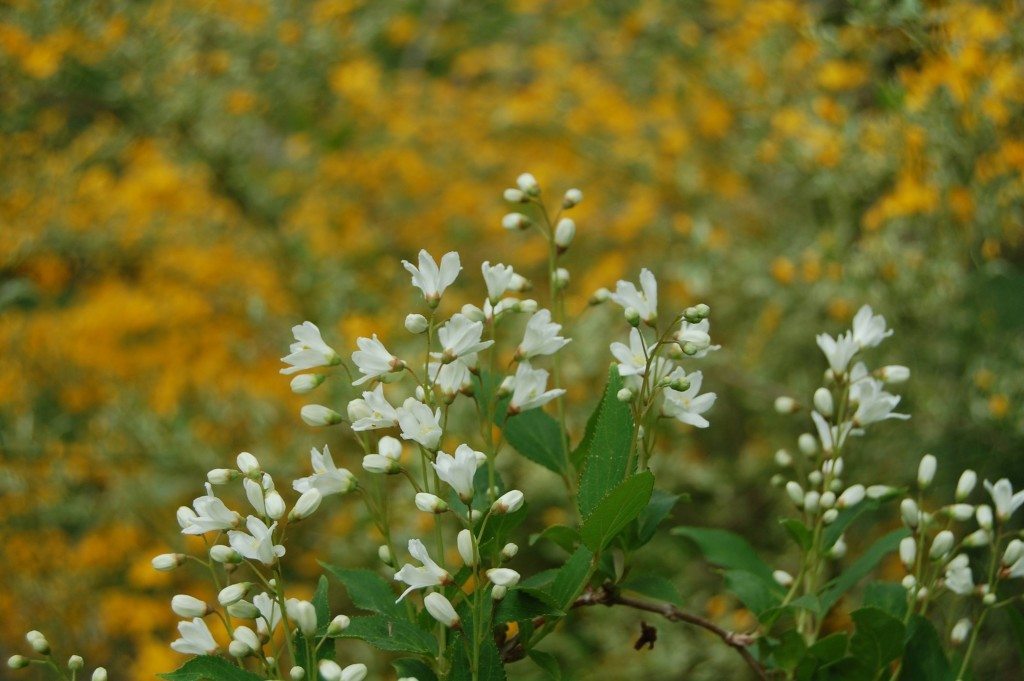
Slender Deutzia (Deutzia gracilis) in the foreground, Kerria japonica in the background.
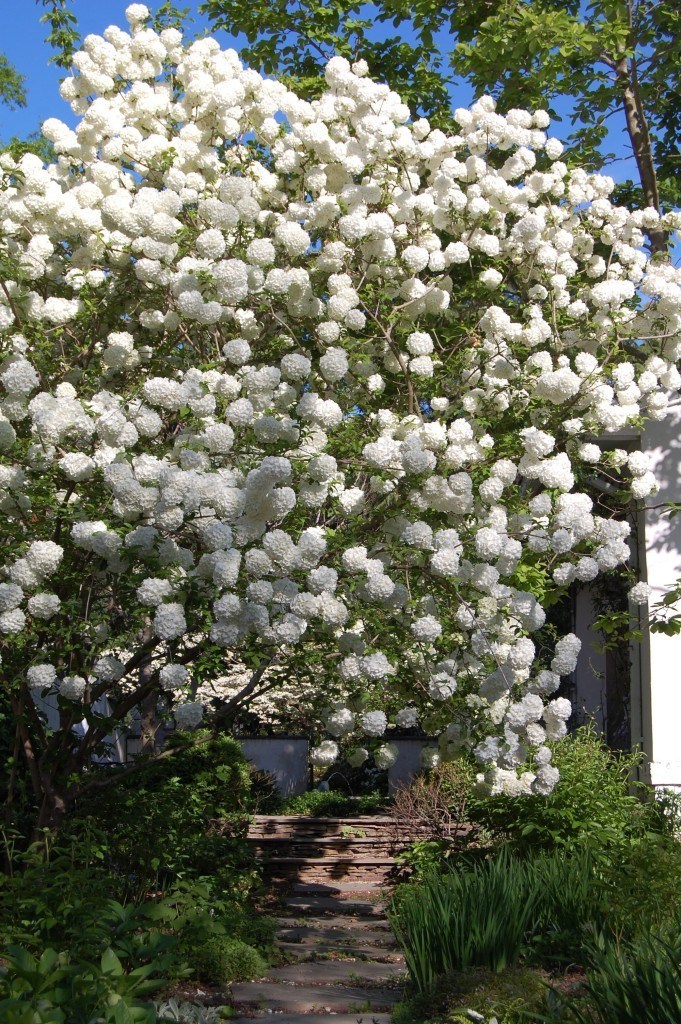
Snowball Viburnum (Viburnum macrocephalum) can be trained into a multi-trunk tree.
[custom-related-posts title=”Related Posts” none_text=”None found” order_by=”title” order=”ASC”]

